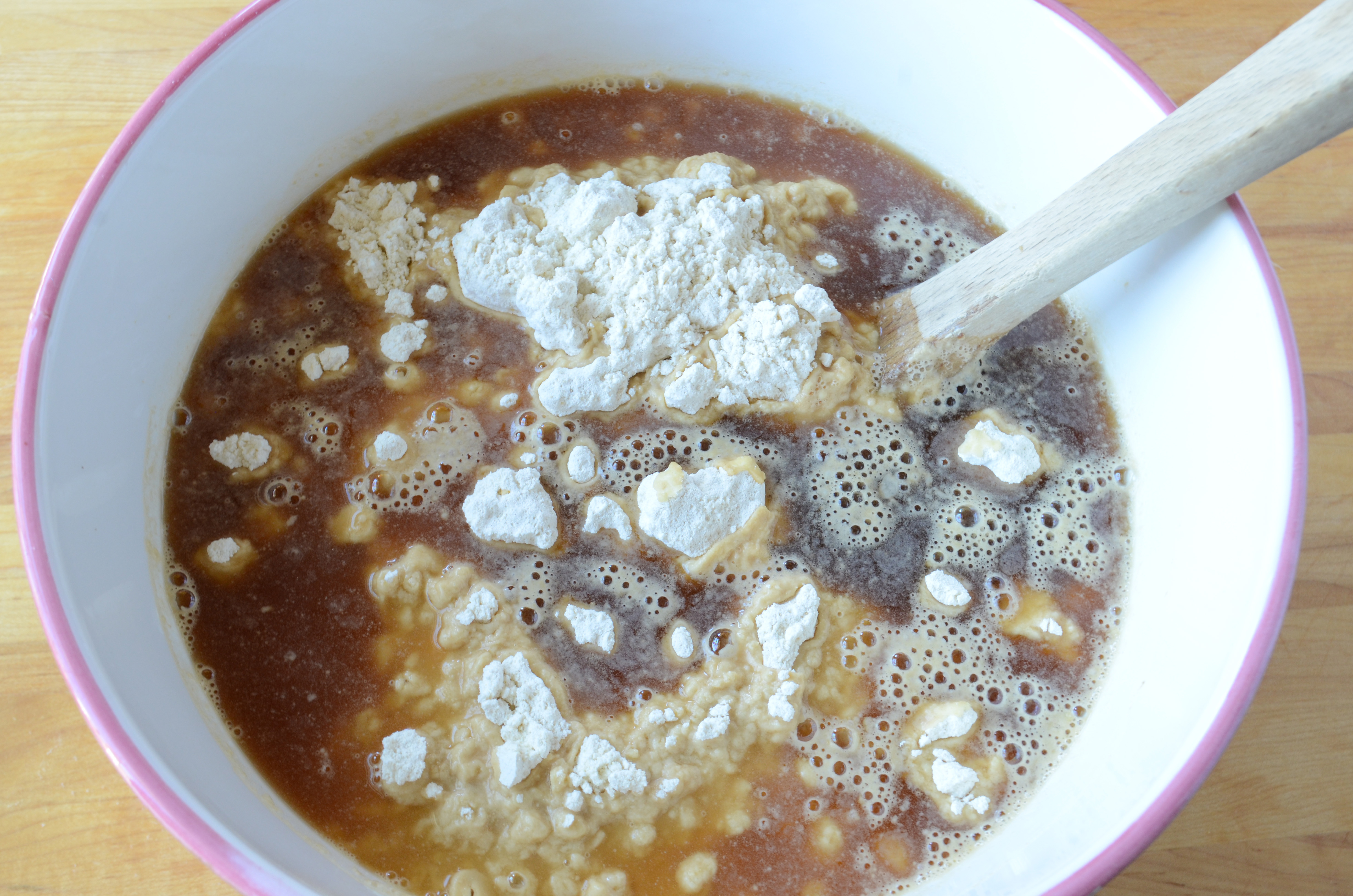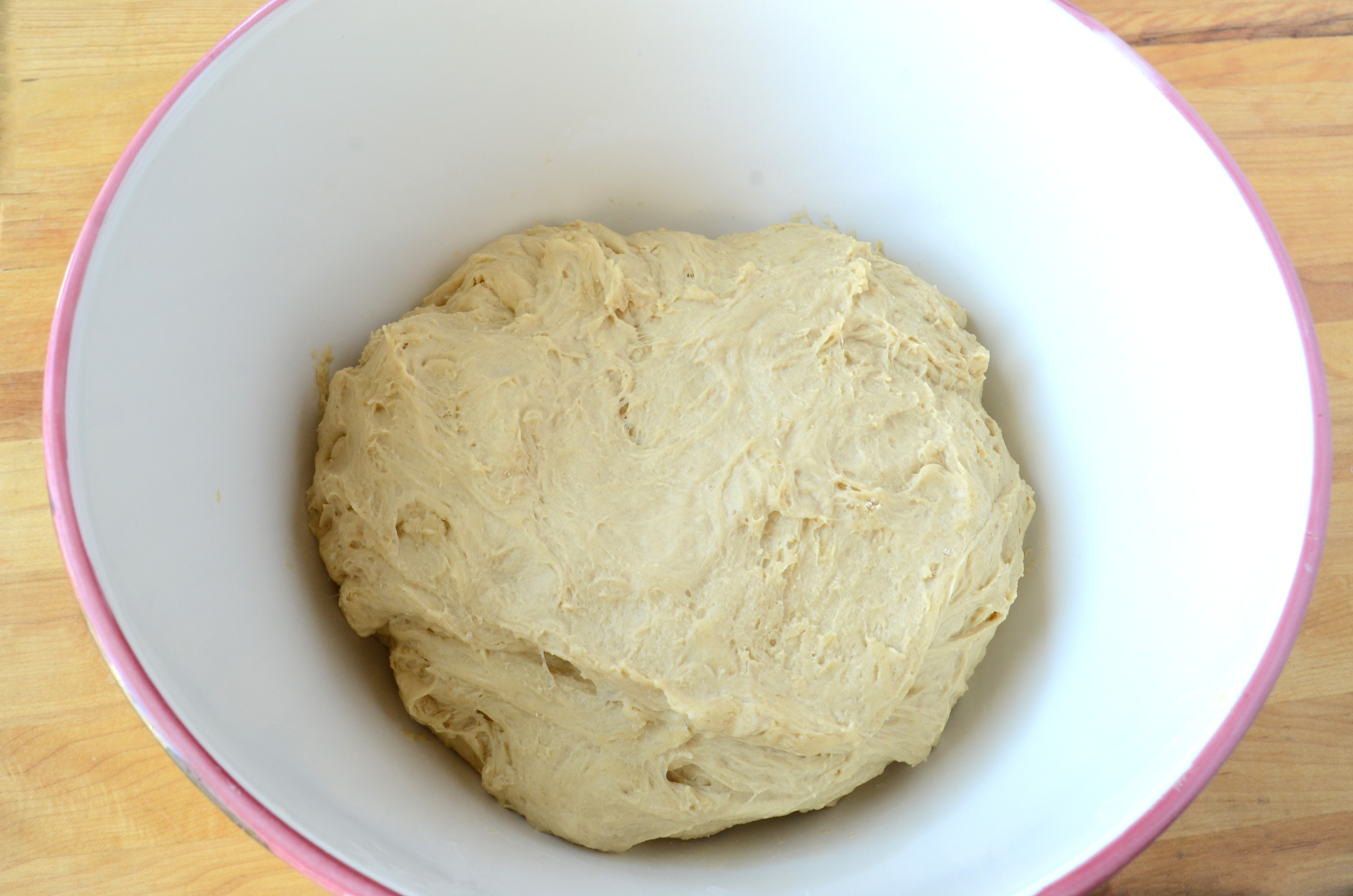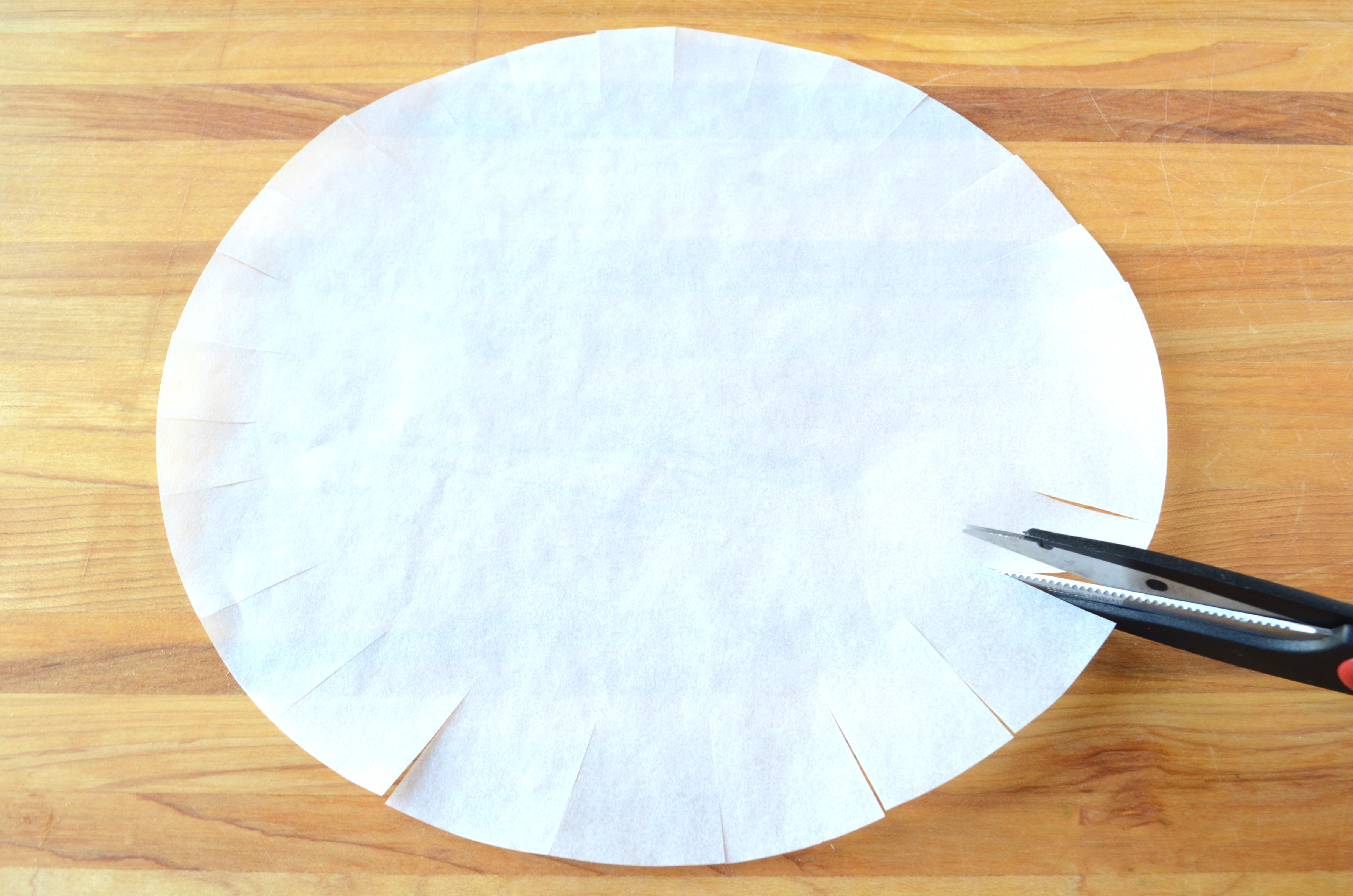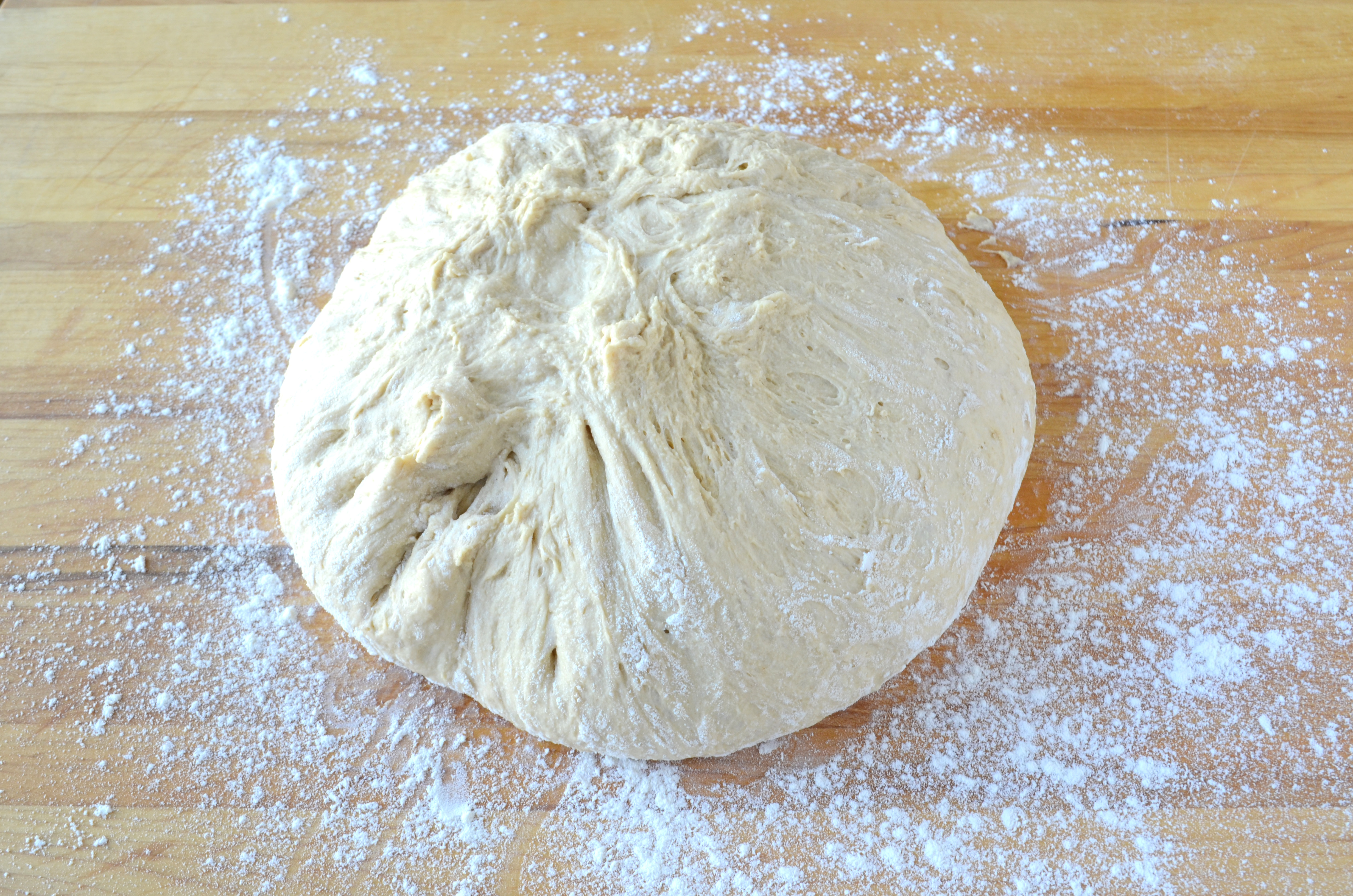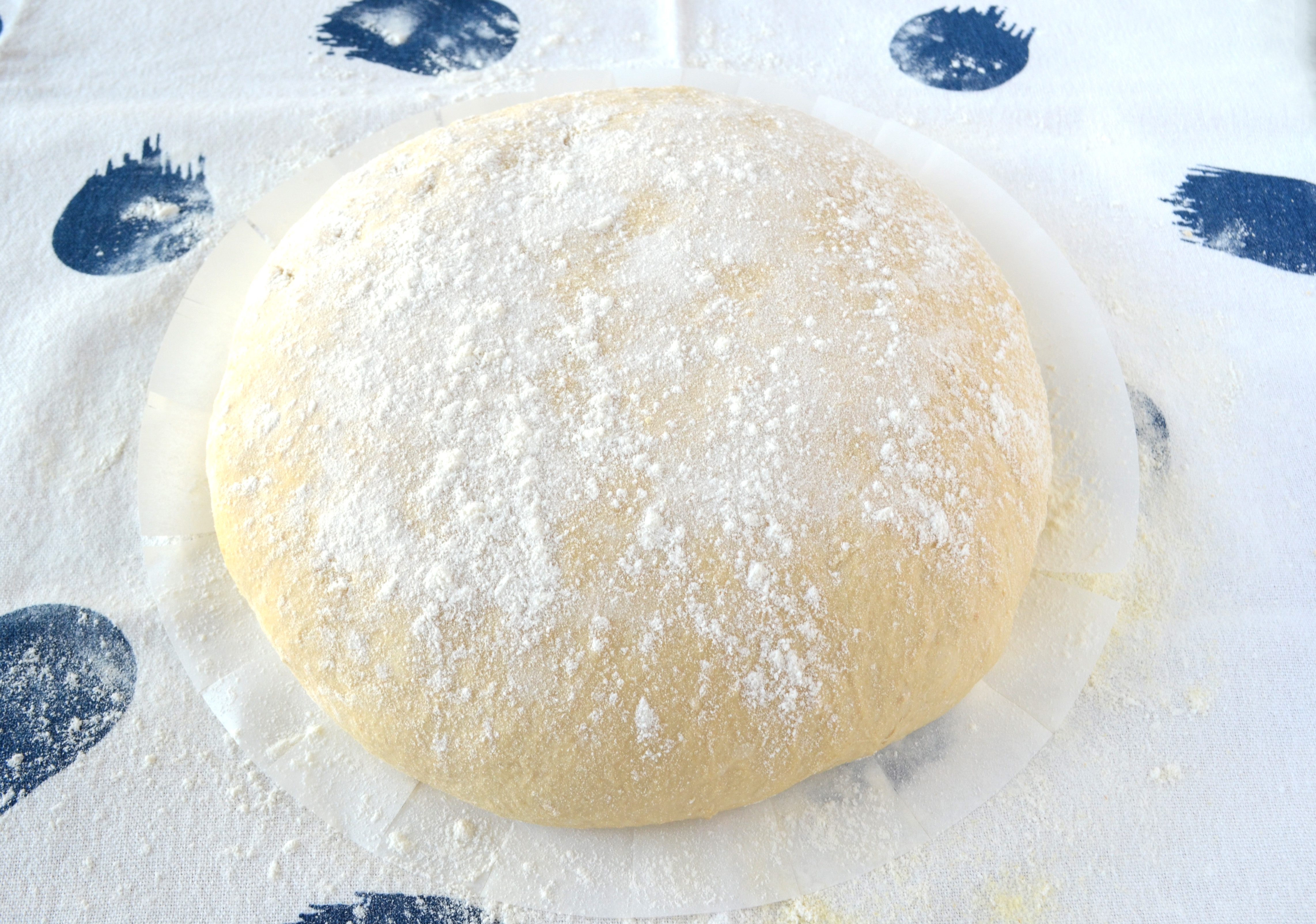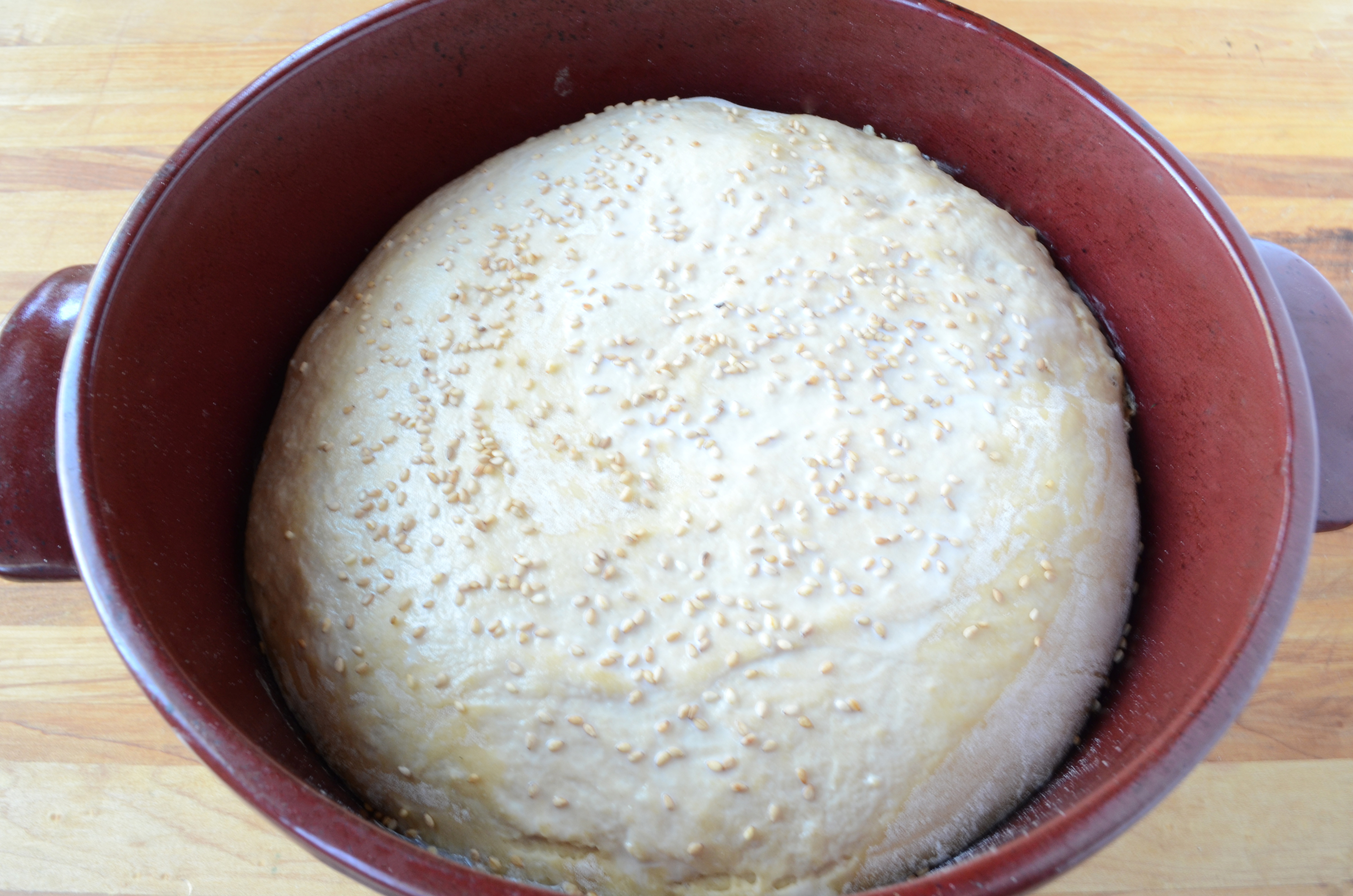My mother comes from the town of Castelvetrano, Sicily. Castelvetrano is famous throughout Italy for its black bread – pane nero, or pane nivuru as they say in the dialect. While living in Sicily, I couldn’t get enough of this stuff. The bread was addicting, and I had withdrawals upon coming back home to the US. Have you ever eaten something that was truly amazing and the memory of its taste still lingers on your taste buds? Pane nero is a rustic, dense, dark loaf (vasteddu) of bread. What sets it apart from any other type of Italian bread is the wheat flour it’s made from – Tumminia. Tumminia or timila is an ancient wheat grain cultivated in parts of the region. It’s impossible to find tumminia flour outside of Sicily; but there are several sites where you can order it online. I was really tempted to do so when I stumbled upon einkorn flour at my local health food store.
I had never heard of einkorn, and you’re probably saying the same thing yourself. Turns out that einkorn is a flour made from farro, another ancient wheat grain. Farro has become a trendy gourmet food lately. It got me wondering if it was similar to tumminia, so I purchased a bag to try out. The rest is history.
Pane nero is made using a sourdough mother starter (criscenti) as a leavening agent. It’s a process that’s way too involved for most folks. So, I experimented with making a no-knead Pane Nero bread, using the Basic No-Knead Bread Recipe, from Jim Lahey’s book My Bread as a basis. Hands down, it’s the best recipe for no-knead bread ever. My daughter gave me a copy as a birthday gift which I treasure. Now my entire family bakes bread using his method. The result of my no-knead bread experiments is an extremely close replication — hence the title quasi — of pane nero, and it will not disappoint. This bread is delicious. Period.
QUASI SICILIAN BLACK BREAD
(Quasi Pane Nero di Castelvetrano)
Difficulty Rating: Easy
Makes 1 large loaf.
Ingredients:
360 grams (3 cups) einkorn flour
254 grams (2 cups) bread flour
192 grams (1 1/2 cups) durum flour
1 tablespoon salt
1 1/2 teaspoons active dry yeast
2 1/4 to 2 1/2 cups water, room temperature
1 tablespoon grape molasses or honey
1 tablespoon barley malt syrup
Parchment paper
1 egg white
Roasted sesame seeds
Special Equipment: A 5-quart ceramic or pre-seasoned cast-iron Dutch oven with lid. The handle of the lid must be oven-proof.
In a large bowl, whisk or stir together the flours and salt. Stir in the yeast. The salt will kill the yeast if it comes in direct contact which is why I stir the salt in the flour first. Combine the water, molasses, and the malt syrup in a medium bowl. Stir the water mixture into the flour mixture, using a wooden spoon or your hands, mix until all the flour is incorporated, about 2 minutes.
Make sure that there are no dry particles of flour adhering to the dough. Cover bowl tightly with plastic wrap and let sit in a warm place overnight for 8 to 10 hours.
Place a clean cotton dish towel (do not use terry cloth or the dough will stick to it) on a flat surface, near a warm draft-free place. Generously flour one side of the dish towel. The other half of the towel will be used to cover the bread while rising.
Cut piece of parchment paper 1 1/2-inches larger than the diameter of the bottom of your Dutch oven. Make 1-inch cuts, about 1-inch apart, along the edge of the parchment circle. This allows the paper to fit properly in the Dutch oven so that the parchment paper doesn’t bunch up and bake into the bread. Place the parchment circle in the center of the floured half of the dish towel.
Generously flour a flat work surface. Using an oiled spatula, turn dough out onto the board and gather the edges together to form into a ball, while deflating the dough as little as possible.
Place the dough upside down in the center of the parchment paper. Dust the top lightly with flour and cover loosely with the other half of the dish towel. Let rise for approximately 1 ½ to 2 hours, depending on room temperature, until double in size.
Forty minutes before the dough has finished rising, preheat the oven to 425 degrees F and place the covered Dutch oven on rack positioned in the lower third of the oven. Preheating the pot traps in the bread’s moisture and the steam creates a crispy crust.
Beat the egg white with 1 teaspoon of water and lightly brush the top of the bread. Sprinkle with sesame seeds. Using pot holders, carefully remove the heated pot from the oven. Remove the lid. Unfold the towel and slide your hand under the parchment circle and carefully drop the dough into the Dutch oven – the pot will be very hot! Cover with the lid and bake for 25 minutes. Remove the lid and continue baking 20 to 30 minutes longer, until deep brown.
Use a spatula to remove the bread. Place on a cooling rack. Let the bread cool completely.

